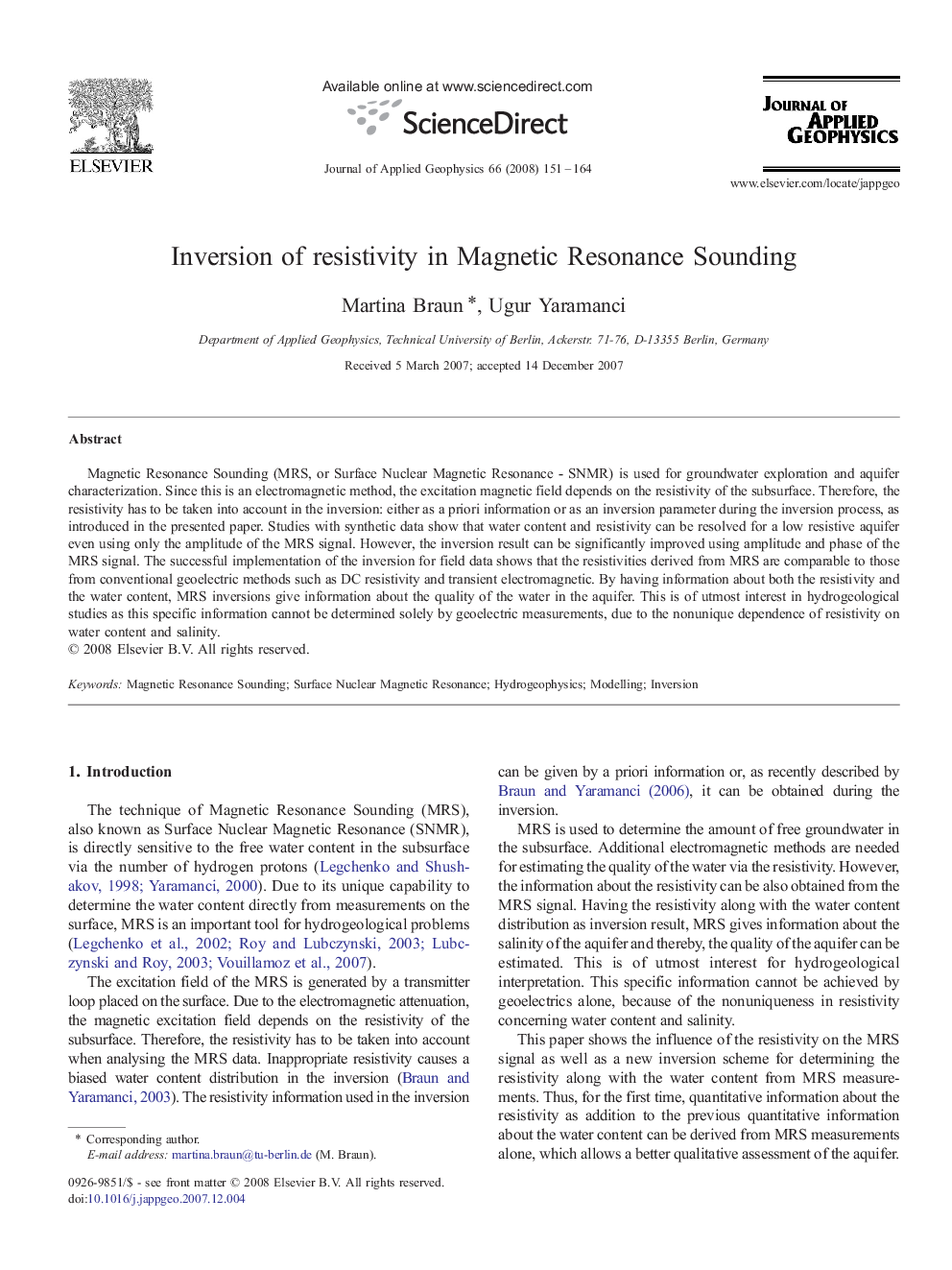| Article ID | Journal | Published Year | Pages | File Type |
|---|---|---|---|---|
| 4741206 | Journal of Applied Geophysics | 2008 | 14 Pages |
Magnetic Resonance Sounding (MRS, or Surface Nuclear Magnetic Resonance - SNMR) is used for groundwater exploration and aquifer characterization. Since this is an electromagnetic method, the excitation magnetic field depends on the resistivity of the subsurface. Therefore, the resistivity has to be taken into account in the inversion: either as a priori information or as an inversion parameter during the inversion process, as introduced in the presented paper. Studies with synthetic data show that water content and resistivity can be resolved for a low resistive aquifer even using only the amplitude of the MRS signal. However, the inversion result can be significantly improved using amplitude and phase of the MRS signal. The successful implementation of the inversion for field data shows that the resistivities derived from MRS are comparable to those from conventional geoelectric methods such as DC resistivity and transient electromagnetic. By having information about both the resistivity and the water content, MRS inversions give information about the quality of the water in the aquifer. This is of utmost interest in hydrogeological studies as this specific information cannot be determined solely by geoelectric measurements, due to the nonunique dependence of resistivity on water content and salinity.
